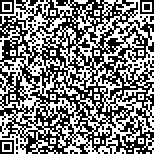| 引用本文: | 车阳,李樱红,李宏,刘淑艳,高雯雯,武雅文,王焕英,孙玲莉,邱晓力,方序,王庭璋.宏基因组测序技术检测胎菊饮片表面微生物污染方法研究[J].中国现代应用药学,2022,39(15):1949-1955. |
| CHE Yang,LI Yinghong,LI Hong,LIU Shuyan,GAO Wenwen,WU Yawen,WANG Huanying,SUN Lingli,QIU Xiaoli,FANG Xu,WANG Tingzhang.Study of Metagenomic Sequencing Technology to Detect Microbial Contamination on the Surface of Chrysanthemi Flos[J].Chin J Mod Appl Pharm(中国现代应用药学),2022,39(15):1949-1955. |
|
| |
|
|
| 本文已被:浏览 1087次 下载 522次 |

码上扫一扫! |
|
|
| 宏基因组测序技术检测胎菊饮片表面微生物污染方法研究 |
|
车阳1, 李樱红2, 李宏3, 刘淑艳4, 高雯雯1,2, 武雅文1, 王焕英1, 孙玲莉1, 邱晓力1, 方序1,2, 王庭璋1,2
|
|
1.浙江省微生物研究所, 浙江省微生物技术与生物信息学研究重点实验室, 杭州 310012;2.浙江省食品药品检验研究院, 国家药品监督管理局药品微生物检测与预警重点实验室, 杭州 310052;3.中国合格评定国家认可中心, 北京 100062;4.中国农业科学院农产品加工研究所, 北京 100193
|
|
| 摘要: |
| 目的 建立基于宏基因组测序技术检测胎菊表面微生物含量的方法,检测市售中药饮片胎菊微生物污染情况,探索微生物污染途径和来源。方法 利用宏基因组测序比较市售胎菊样品培养组与非培养组之间的表面微生物检出差异,并运用宏基因组测序技术检测2款胎菊商品的表面微生物含量。检测杭州原种场和桐乡新鲜胎菊样品的表面微生物种类,并比较新鲜样品与商品表面微生物种类及相对含量差异。结果 相较于培养组,宏基因组测序技术可以从非培养组中检出更多真菌和古菌。2款胎菊商品表面均检出条件致病菌,饮片表面的微生物与同产地新鲜胎菊样品表面微生物组成相近,表明污染可能来自于种植环境。结论 市售胎菊商品中存在微生物污染情况,宏基因组测序方法可以有效检测胎菊饮片表面微生物,可作为中药饮片微生物污染监测、中药饮片污染微生物数据库构建的有力工具,进而为提高中药饮片的用药安全奠定技术基础。 |
| 关键词: 胎菊 宏基因组测序 表面微生物 |
| DOI:10.13748/j.cnki.issn1007-7693.2022.15.005 |
| 分类号:R915 |
| 基金项目:浙江省基础公益研究计划项目(LGN19C010001);浙江省市场监督管理局科技计划项目(20210128) |
|
| Study of Metagenomic Sequencing Technology to Detect Microbial Contamination on the Surface of Chrysanthemi Flos |
|
CHE Yang1, LI Yinghong2, LI Hong3, LIU Shuyan4, GAO Wenwen1,2, WU Yawen1, WANG Huanying1, SUN Lingli1, QIU Xiaoli1, FANG Xu1,2, WANG Tingzhang1,2
|
|
1.Key Laboratory of Microbial Technology and Bioinformatics of Zhejiang Province, Zhejiang Institute of Microbiology, Hangzhou 310012, China;2.NMPA Key Laboratory for Testing and Risk Warning of Pharmaceutical Microbiology, Zhejiang Institute for Food and Drug Control, Hangzhou 310052, China;3.China National Accreditation Institute for Conformity Assessment, Beijing 100062, China;4.Institute of Food Science and Technology, Chinese Academy of Agricultural Sciences, Beijing 100193, China
|
| Abstract: |
| OBJECTIVE To establish a method based on metagenomic sequencing technology to detect the microbial content on the surface of Chrysanthemi Flos, detect the microbial contamination of Chrysanthemi Flos in commercially available Chinese medicine decoction pieces, and explore the ways and sources of microbial contamination. METHODS Metagenomic sequencing was used to compare the surface microbial detection differences between the cultured group and the non-cultured group of commercially available Chrysanthemi Flos samples, and the metagenomic sequencing technology was used to detect the surface microbial content of the two Chrysanthemi Flos products. Detect the surface microbe species of fresh Chrysanthemi Flos samples from Hangzhou original seed farm and Tongxiang county, and compare the species and relative content of microbes on the surface of fresh samples and commercial products. RESULTS Compared with cultured group, more fungi and archaea could be detected in the non-cultured group by metagenomic sequencing technology. Conditional pathogens were detected on the surface of both two commercial brands. Compared with fresh samples from different producing areas, more similar microbial community structure was found between the commercial samples and the fresh ones from the same producing area, which suggested that the microbial contamination mainly came from their original place. CONCLUSION Microbial contamination is present in commercial Chrysanthemi Flos samples, and the use of metagenomic sequencing in cultivation-independent samples can detect the microbial community structure. Thus, metagenomic sequencing can be considered as a powerful tool for the monitoring of microbial contamination and improving the drug safety of the Chinese herbal medicine. |
| Key words: Chrysanthemi Flos metagenomic sequencing surface microbial content |
|
|
|
|
